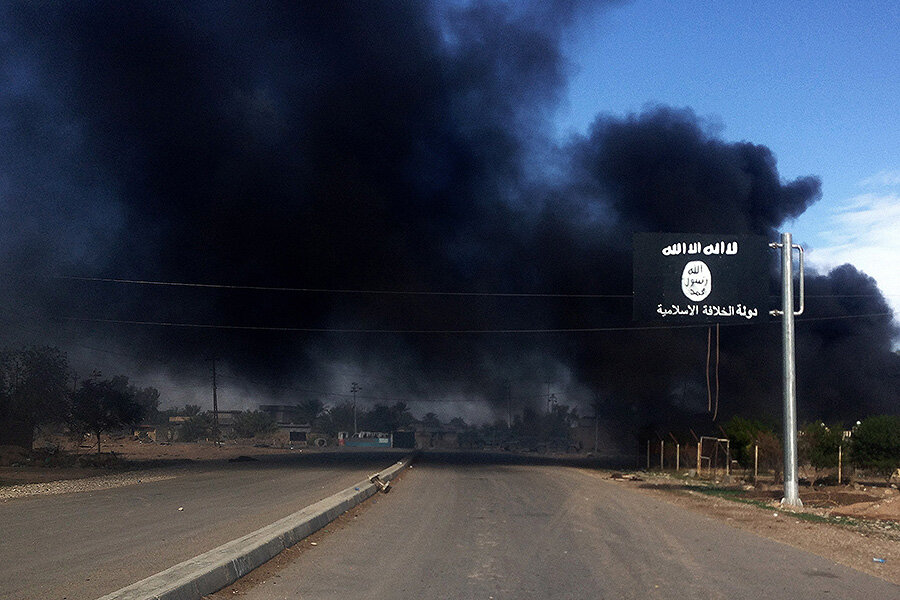Understanding ISIS: what personnel documents reveal
Loading...
Joining Islamic State (IS) takes plenty of paperwork, as revealed by a new trove of leaked documents that may help governments track and prosecute fighters, while also developing better counter-recruitment strategies to deter future sympathizers.
The documents had been filled out by more than 20,000 IS recruits, who are typically asked to complete a 23-item questionnaire, offering personal information ranging from birth date and education to religious training and past fighting experience. Recruits are also asked about blood type, family contacts, any recommendations, and their willingness to prepare for a suicide mission.
The documents were leaked by a former IS fighter who stole them from the group's internal police chief and passed them to news organizations including NBC and the UK's Sky News.
The convert, who calls himself Abu Hamed, told Sky News that he hoped the leak would harm IS's efforts, "God willing." Mr. Hamed said he was disillusioned by IS because he believed it was working to undermine moderate rebels in Syria's civil war, and had lost its religious focus.
German intelligence officials have said they believe the documents are authentic, according to NBC.
"They provide a great chance for the procedure of furnishing proof and the participation also of Germans in terror activities," Interior Minister Thomas de Maiziere said in a statement. "With this, we also better understand the structures of this terror organization and it will possibly function as a deterrent for some young radical people."
Western governments have struggled to track and contain a trickle of sympathizers traveling to Iraq, Syria, and now Libya to support the terror group's self-proclaimed caliphate. Nationals from over 51 countries are documented in the personnel files, including four from the United States and six from Canada. The majority came from Northern Africa or the Middle East. The leaked documents come from IS border stations, where they were filled out between November and December 2013, according to the Independent.
Western authorities also fear that their nationals could return home to launch attacks, particularly as the fight against IS in its own territories intensifies. But the documents may shed light on the travel paths taken by the recruits, as well revealing the identities of those who radicalized or recommended them, information that could provide powerful tools for counter-terrorism agencies.
The files may "lead them to the individuals who radicalized these individuals as well as facilitated their departure," Royal United Services Institute terrorism expert Afzal Ashraf told Sky News. "It's those people that are really key. It's these people that are capable of radicalizing and sending out foreign fighters in their dozens."
J.M. Berger, a fellow at George Washington University's Program on Extremism, has outlined the five steps he believe recruits take from initial "discovery" to action, as IS attracts supporters online and gradually shifts to offline recruitment; he has argued that anti-terror operations need to design counter-narratives specially designed to interrupt that process.
"One of the major gaps in our response to [Islamic State] is the lack of investment in developing and disseminating effective counter-narratives that are compelling to the Millennial youth who are ISIS’s principal targets for recruitment," Brown University professor Jessica Stern told the Senate's Homeland Security Committee last month as they considered three proposals to improve anti-recruitment programs. "To do this effectively, we need to listen closely to what ISIS says it wants to achieve and to what it claims to offer youth."








